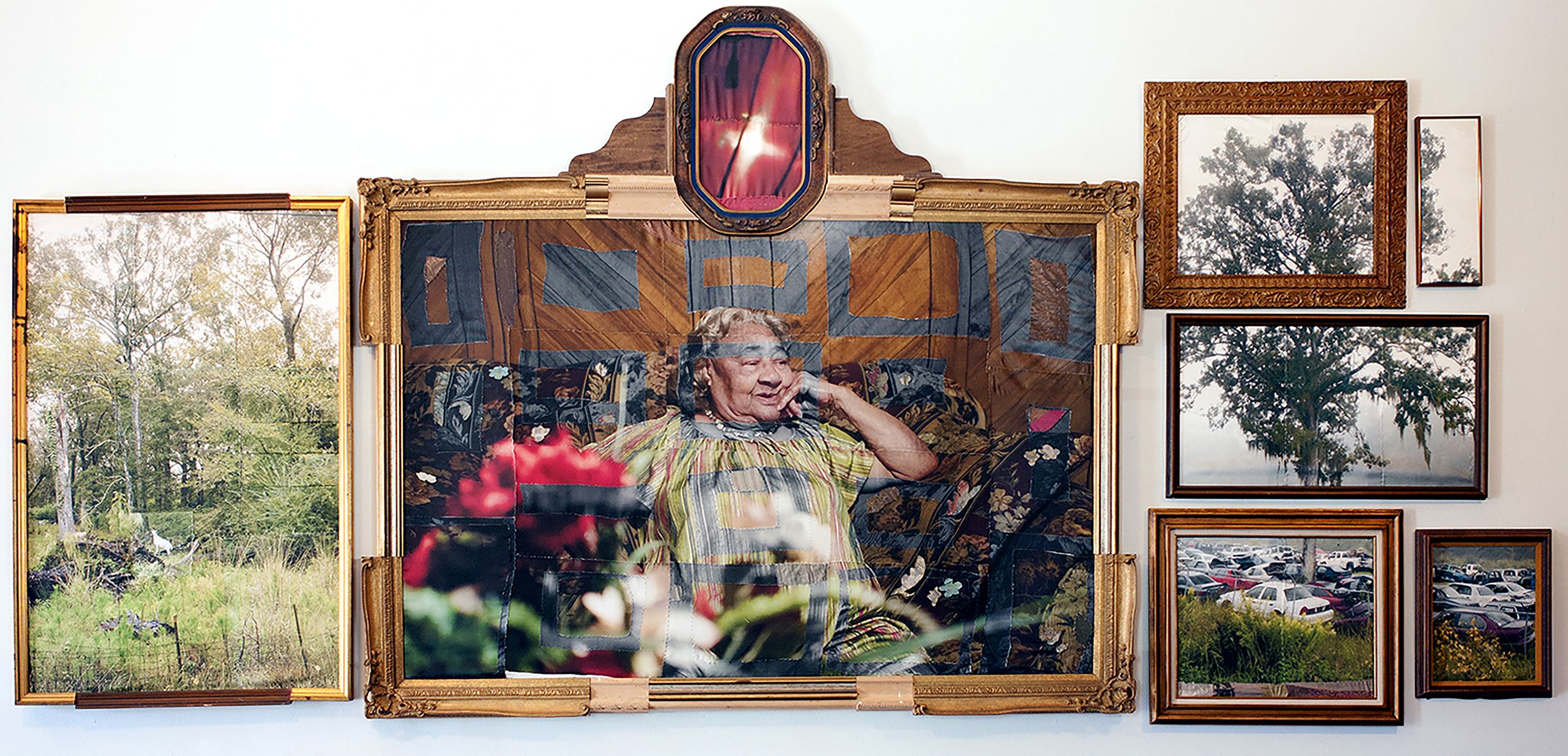
On exhibit: This Same Dusty Road
Louisiana Highway 19 may not have the same ring as Route 66 or the Blue Ridge Parkway, but for multimedia artist Letitia Huckaby—and anyone who has spent a good chunk of life in the parishes of East Baton Rouge and East Feliciana—it constitutes a collage of memories too vast and too spiritual for a traditional mode of art. Or rather, for just one traditional mode of art.
In “Letitia Huckaby: This Same Dusty Road,” which opens September 17 at the LSU Museum of Art, Huckaby—who holds three degrees in photography and journalism—uses heirloom fabrics, traditional hand-quilting techniques and photography to map the images of her family legacy in a visual journey at once personal and universal. Centering particularly on her family matriarchs and the complexities of African American life in the South both past and present, the roughly 20 pieces of Huckaby’s work, hanging like tapestries meant to be gazed upon, and not glanced at, lend texture to the art of forging and preserving memory.
“With so many of us distant, unable to visit family and friends, I think her work offers connection, affirmation and a critical perspective,” says LSU MOA curator Courtney Taylor. “Her work also confronts racial, social and economic inequities that are at the fore of national conversations right now amid Black Lives Matter and COVID-19.”
One of Huckaby’s most complex pieces of photography printed on silk, “East Feliciana Altarpiece,” features the artist’s grandmother Jessie as its central figure, bordered by an ornate frame and surrounded by photographs of local trees, yards and parking lots—the geographies of place and purpose in everyday life. Every detail matters: her use of cotton relates to the significance of cotton in the lives of her enslaved ancestors, and her “Bayou Baroque” series traces another, broader matriarchy—the Sisters of the Holy Family in New Orleans.
“There are many artists working with photography who print on fabric, and many artists that incorporate quilting techniques into their work,” says Taylor, “but Letitia certainly brings a unique approach—and the unique approach combining her faith, family and cultural history and its rootedness here in Louisiana will be special for our audiences.”
Huckaby will also serve as guest curator to embed works from LSU MOA’s next exhibition, “Southbound: Photographs Of and About the New South,” into the permanent collection. In the meantime, her work will be on display until March 14, 2021. lsumoa.org











